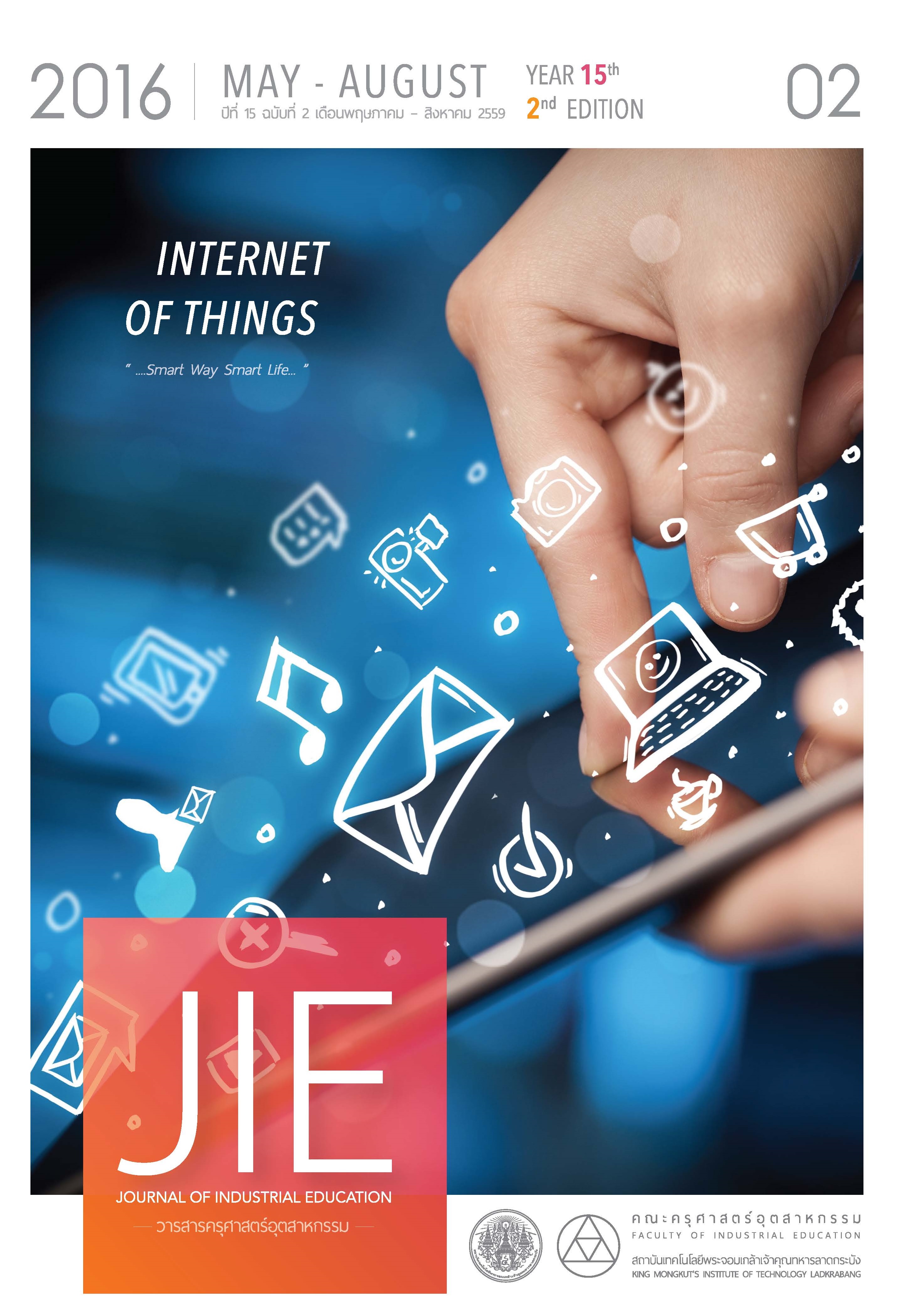CAUSAL RELATIONSHIP OF PROACTIVE WORK BEHAVIOR OF LECTURERS IN THE RAJAMANGALA UNIVERSITY OF TECHNOLOGY
Keywords:
Proactive personality, transformational leadership, teacher-efficacy, psychological empowerment, Proactive work behaviorAbstract
This paper presents a causal relationship of proactive work behavior of lecturers in the Rajamangala University of Technology. The purposes of this research were to 1) study causal factors of proactive work behavior of the lecturers, 2) develop a causal relationship model of proactive work behavior of the lecturers, and 3) examine consistency of a causal relationship model of proactive work behavior of the lecturers. A samples of 450 lecturers was randomly selected from nine Rajamangala University of Technology in the 2016 academic year. Sample are those who were in five disciplines as follow, 1) Engineering services, 2) Architectural services, 3) Surveying qualification, 4) Accountancy services, and 5) Tourism. These disciplines were tied to the Mutual Recognition Arrangements: MRAs, the sectorial agreements based on the free movement of labor in the ASEAN region. The tool for data collection was a questionnaire constructed by the researcher. The data were analyzed using descriptive statistics in terms of relationship coefficient, along with confirmatory factor analysis (CFA) and structural equation modeling (SEM).
The results showed as follows. 1) Proactive personality, transformational leadership, teacher-efficacy and psychological empowerment were causes of proactive work behaviors of the lecturers, by which proactive personality variables affected proactive work behaviors the most through teacher-efficacy variable. 2) Causal relationship of proactive work behavior of the was consistent with empirical data Chi-square (X2) = 125.610, p-value = .083, RMSEA =.022, CFI =.995, GFI=.971, AGFI = .943
References
[2] ปริยาภรณ์ ตั้งคุณานันต์. 2557. การพัฒนาคุณภาพชีวิตครูไทยตามแนวทางปรัชญาเศรษฐกิจพอเพียง. วารสารครุศาสตร์อุตสาหกรรม, 13(3), น.190.
Tungkunanan, P. 2014. The Development of The Quality of Life of Thai Teacher According to The Philosophy of The Sufficiency Economy. Journal of Industrial Education, 13(3), p.190.
[3] Searle. P. 2011. A multilevel examination of proactive work behaviors: contextual and individual differences as antecedents. Doctor of Philosophy. Thesis in Human Sciences (Leadership Studies), University of Nebraska.
[4] Hair, J.F., W.C. Black, W.C. Babin and R.L. Tatham. 2006. Mulitivariate data analysis. 6th ed. New Jersey: Prentice Hall.
[5] Parker, S. K., Williams, H. M., and Turner, N. 2006. Modeling the antecedents of proactive behavior at work. Journal of Applied Psychology, 91 (3), p.636-652.
[6] Bass, B. M. and Avolio, B. J. 2004. Multifactor leadership questionnaire: Manual and Sampler set. Mind Garden, Menlo Park, CA.
[7] Bertolino, M., Truxillo, D.M., and Fraccaroli, F., 2011. Age as moderator of the relationship of proactive personality with training motivation, perceived career development from training, and training behavioral intentions. Journal of Organizational Behavior, 32, p.248-263.
[8] Spreitzer, G. M. 1995. Psychological empowerment in the workplace: Dimensions, measurement, and validation. Academy of Management Journal,38 (5), p.1441-1465.
[9] Chan, et al. 2008. Organizational and Personal Predictors of Teacher Commitment: The Mediating Role of Teacher Efficacy and Identification With School. American Research Journal, September. Vol. 45 No.3 p.597-630
[10] Axtell, C. M., & Parker, S. K. 2003. Promoting role breadth self-efficacy through involvement, work redesign and training. Human Relations, 56(1), p.113-131.
[11] Bateman, T. S., and Crant, J. M. 1999. Proactive behavior: Meanings, impact, and recommendations. Business Horizons, 42(3), p.63-70.
[12] Crant, J. M. 1995. The proactive personality scale and objective job performance among real estate agents. Journal of Applied Psychology, 80(4), p.532-537.
[13] Parker, S. K. 1998. Enhancing role breadth self-efficacy: The roles of job enrichment and other organizational interventions. Journal of Applied Psychology, 83(6),p.835-852.
[14] Parker, S. K. 2000. From passive to proactive motivation: The importance of flexible role orientation and role breadth self-efficacy. Applied Psychology: An International Review, 49, p.447-469.
[15] Cavazotte, et al. 2013. Transformational Leaders and Work Performance: The Mediating Roles of Identification and Self-efficacy. Brazilian Administation Review, October. Vol. 10 No.4 p.490-512,
[16] Belschak, F.D., and Hartog, D.N.D., 2010.Pro-self, prosocial, and pro-organizational foci of proactive behavior: Differential antecedents and consequences. Journalof Occupational and Organizational Psychology, 83, p.475-498.
Downloads
Published
How to Cite
Issue
Section
License
"The opinions and contents including the words in papers are responsibility by the authors."
"ข้อคิดเห็น เนื้อหา รวมทั้งการใช้ภาษาในบทความถือเป็นความรับผิดชอบของผู้เขียน"



